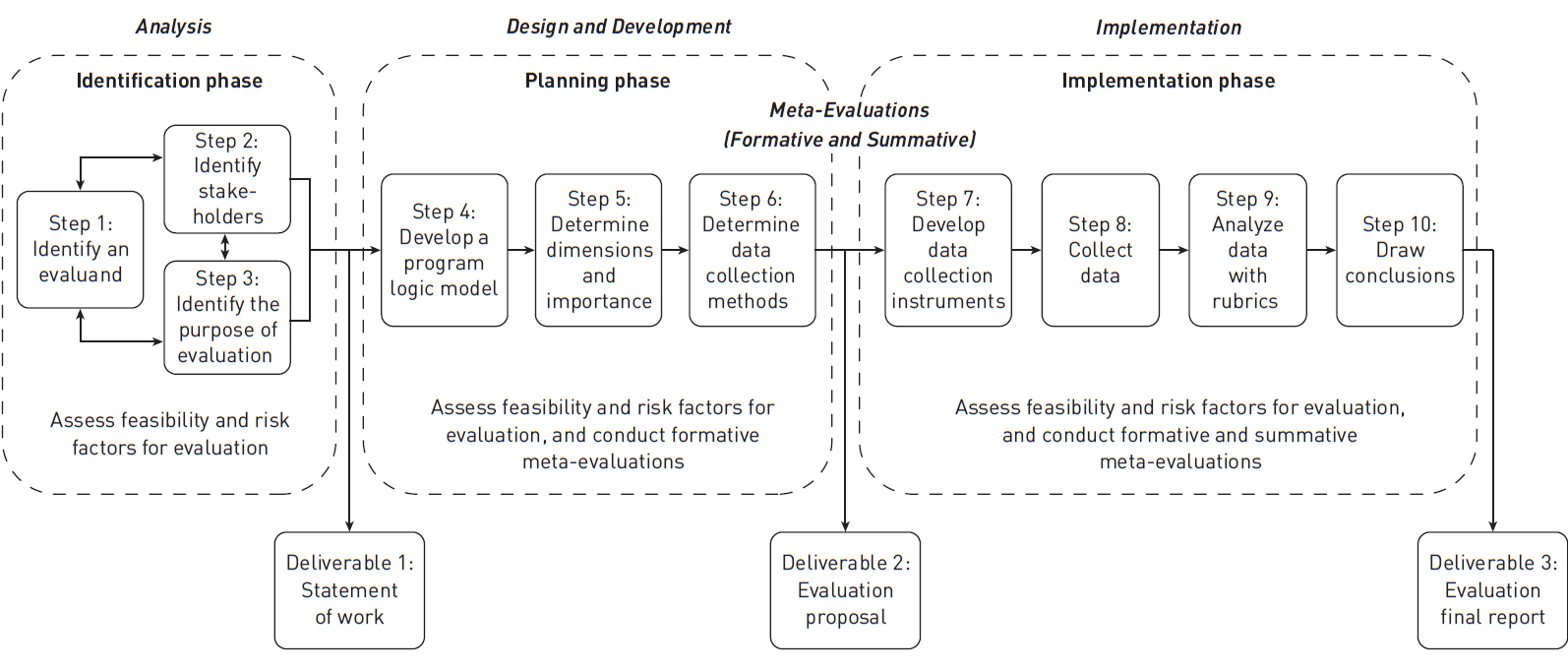Email
kandihorsman@performex-consulting.com
Location
Moncton, New Brunswick, Canada

–Kirkpatrick & Kirkpatrick, 2016, pp. 5-12
If you can’t measure it, you can’t improve it.

(Chyung, 2019, Figure 4, p. 15)
PERFORMEX uses Chyung’s (2019) 10-Step Evaluation Procedure to take a systematic and systemic approach to training program evaluation.
PERFORMEX uses a hybrid evaluation model (aligned with the program logic/training impact model) to gather data which enable you to measure and report on the return for your organization’s training program investment. PERFORMEX adds Kirkpatrick’s (2016) Level 1: Reaction to Brinkerhoff’s (2006) Training Impact Model (TIM). This enables you to first gather data on the design of the training program itself and to then action this data to make any necessary improvements. Data gathered from Levels 2-5 (i.e., Brinkerhoff’s TIM) are focused on the outcomes of the training program. In other words, Levels 2-5 data demonstrate how participants’ learning from your training program is transformed into improved on-the-job behaviours–which in turn contribute to desired organizational results.
Extent to which participants react positively to the training program, including:
Kirkpatrick & Kirkpatrick, 2016
Extent to which participants acquire the following based on their participation in the training program:
Kirkpatrick & Kirkpatrick, 2016
Extent to which training graduates apply the *critical behaviours they learned during training when they return to their role.
*Kirkpatrick & Kirkpatrick (2016) define critical behaviours as the key specific, observable, and measurable actions that the target audience will have to consistently perform on the job to bring about the organization’s highest-level desired results.
Kirkpatrick & Kirkpatrick, 2016
Extent to which short-term outcomes (i.e., internal and external) indicate that critical actions are on track to create a positive impact on organizational goals.
Kirkpatrick & Kirkpatrick, 2016
Extent to which the organization’s highest-level goals occur as a result of the training program and the support and accountability package.
Kirkpatrick & Kirkpatrick, 2016
Check out the formative program evaluation that two course colleagues and I conducted in the US public service. In our final project report posted as an exemplar on Boise State University’s website, we step readers through the evaluation of a training program. Our project added value to the client’s organization by providing 12 recommendations to improve the training program design, schedule, and post-training support.
Chyung, S. Y. (2019). 10-step evaluation for training and performance improvement. Sage.
Kirkpatrick, J. D., & Kirkpatrick, W. K. (2016). Kirkpatrick’s four levels of training evaluation. ATD.